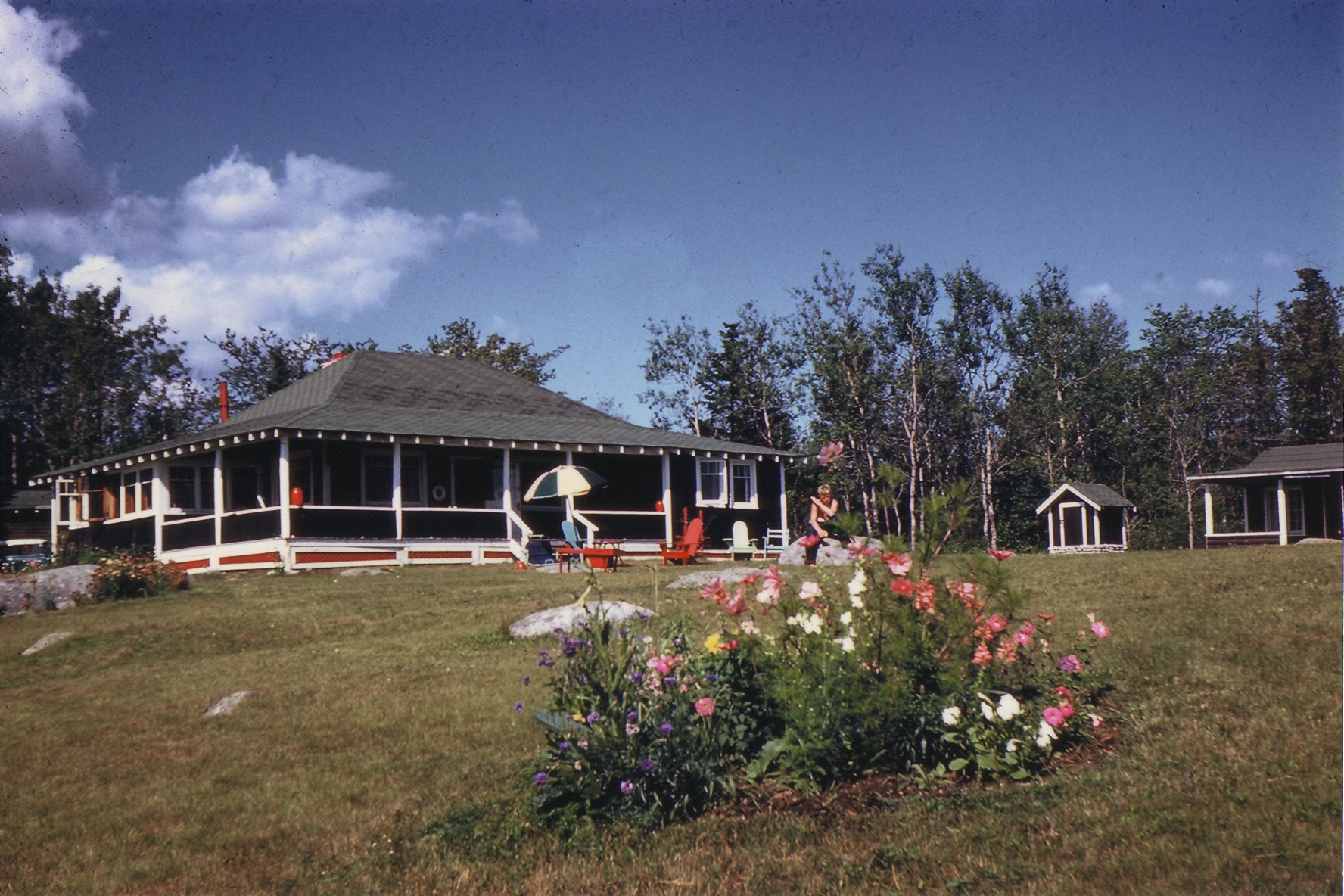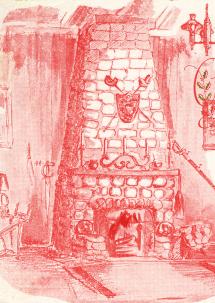Chapter Seven, The Shoals
"The Shoals" was named after shoals located at the middle of the entryway into Hubbards Cove. One could see them from the cottage where the sea and wind caught them and shot great white waves skywards. "The Shoals" was tucked in from a point of land to be found on the north-eastern shores of this entryway.
I am not sure when my folks bought the place, either in 1949 (my age, eight) or maybe it was in 1950. I located the deed dated August 15th, 1950, whereby the Hackett's Cove property, Hill-Top-House, was conveyed to Rachel Sandy Timothy (ux to Kenneth). What I overheard is that my father approached Mrs Dawson, who owned "The Shoals." He was referred to her by a mutual friend. Not on the first "go-around" was there a deal struck, but one was eventually brought about.
It was at our cottage at Hubbards that I spent my "Eternal Summers" from age eight to a time in my teenage years when I preferred to be with my friends in the city. These summers started when our family was installed in the cottage at the end of June and ended the first of September. (Keeping much to teachers' hours, my father, while travelling into the city on occasion, spent his time at Hubbards.) Is it not interesting -- I believe it's a common childhood experience -- to the young, summer days seemed like weeks; months, years.
These days, I find salt water off the coast of Nova Scotia, simply cold. Back when I was a boy at Hubbards, I lived in the water. The cottage was along a rocky shore, though a sandy beach was but a 20 minute walk along the shore towards the inter cove of Hubbards. It is called on the maps, Dauphinees Beach; though a local entrepreneur, Roy Harnish, thought he had exclusive rights to the beach. Roy, as his family does yet these days, ran the Shore Club. From his club a well oiled road ran to the beach, the only way to get to the beach was by motor vehicle. People coming, mostly from the city, would drive down the road and find Roy or his elderly father there with his hand out: "50¢ Please!" It was probably worth it, as Harnish keep the road and the land adjacent to the beach clean and in good order. He had a diving raft off of the beach; there was a canteen; and, parking for a considerable number of cars. As for the cottagers, mostly their kids, they would walk along the shoreline and get themselves on the beach, no one can claim rights to the shore itself. One summer, I recall, Roy wrote all the cottagers advising them, for a fee, they could use the beach for the season. The cottagers were indignant; I don't think Roy raised much money in this way.
Before leaving the subject of "Roy's Beach" there is a couple of other memories. One is that for a few summers Roy hired me to work at his canteen which entailed scooping ice-cream, filling the pop coolers, heating up the hot-dogs and serving the barefooted and bathing suited customers. Roy, gave me his trust, as I was given the key and I opened and closed the canteen. This was not a daily routine, as it was open only on weekends and holidays, and then only on good weather days. The other thing I want to mention is the company picnics held at the beach. Roy made deals with companies such as Imperial Oil, so that they could run their summer events at and around the beach. The cottage kids soon learned to mingle in with the other kids, and played the games which were organised for a day's fun on the beach; we won prizes and lined up for the food that was being generously handed out. Nobody bothered us. There was just too many kids running around for the supervising adults to get worked up over a few strays that joined in on the fun.
The main cottage, which I took as nothing terribly special, was, indeed, very special, as I now realize looking back. The previous owner, which I think had the place built in the "thirties," spared no expense. (Except the builder should have put in a better foundation, it was up on posts and my father, every year, was under the place with jacks trying to keep the large surface of the cottage floor level.) Cedar was used inside and out; stained on the outside and left in its natural state inside. There was a separate bedroom and bathroom off of the kitchen (servant's quarters). On the opposite side there was a separate entrance to a hallway off of which there were three bedrooms and another bathroom. In the center was a great living room with high ceilings and a large beach-stone fireplace. Off that was the dining room and then came the kitchen.
As the years went by there was less and less interest as the kids grew up and their entertainment was to be found in the city. Yours truly, at a young age, was married in 1960 and by 1962 I was working with a company that transferred me and my little growing family out of the province (more on this part, in time). It was a lot of work keeping "The Shoals" in good shape. As one will see from the pictures: there was the main cottage; a separate little cottage for guests; another with a large single room which was the "Rec Cottage" (recreation, most of the room was taken up with a ping-pong table); a separate garage; and, a small structure which was over the well and contained the pump. In the later years, not much help was extended to my father in order to help him to do the work to keep this complex up; the place was sold in January of 1965 to the wife of one his "Phys-Ed" teachers, Joan Marie Douglas. The land was eventually cut up with pieces to either side being sold to the adjoining neighbors; the "Rec Cottage" was torn down in the process.


